Greg O’s Garage; The F.R.P. automobile built in Port Jefferson
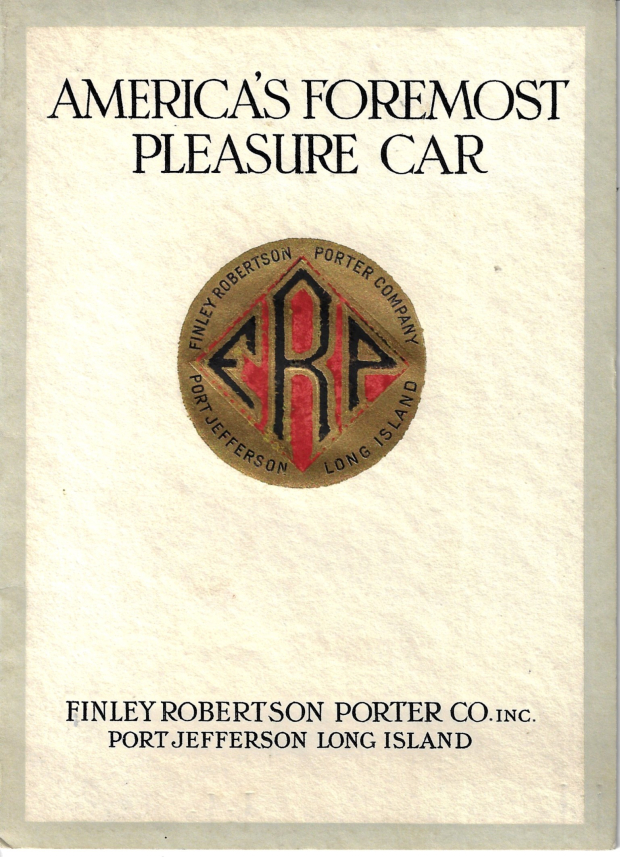
Little is known about the F.R.P. automobile built by Finley Robertson Porter in Port Jefferson on Long Island, but recent photos and documentation found in the Walter McCarthy archives sheds much light on this amazing luxury vehicle as well as others built in Port Jeff.
Greg O.
The 'Only'
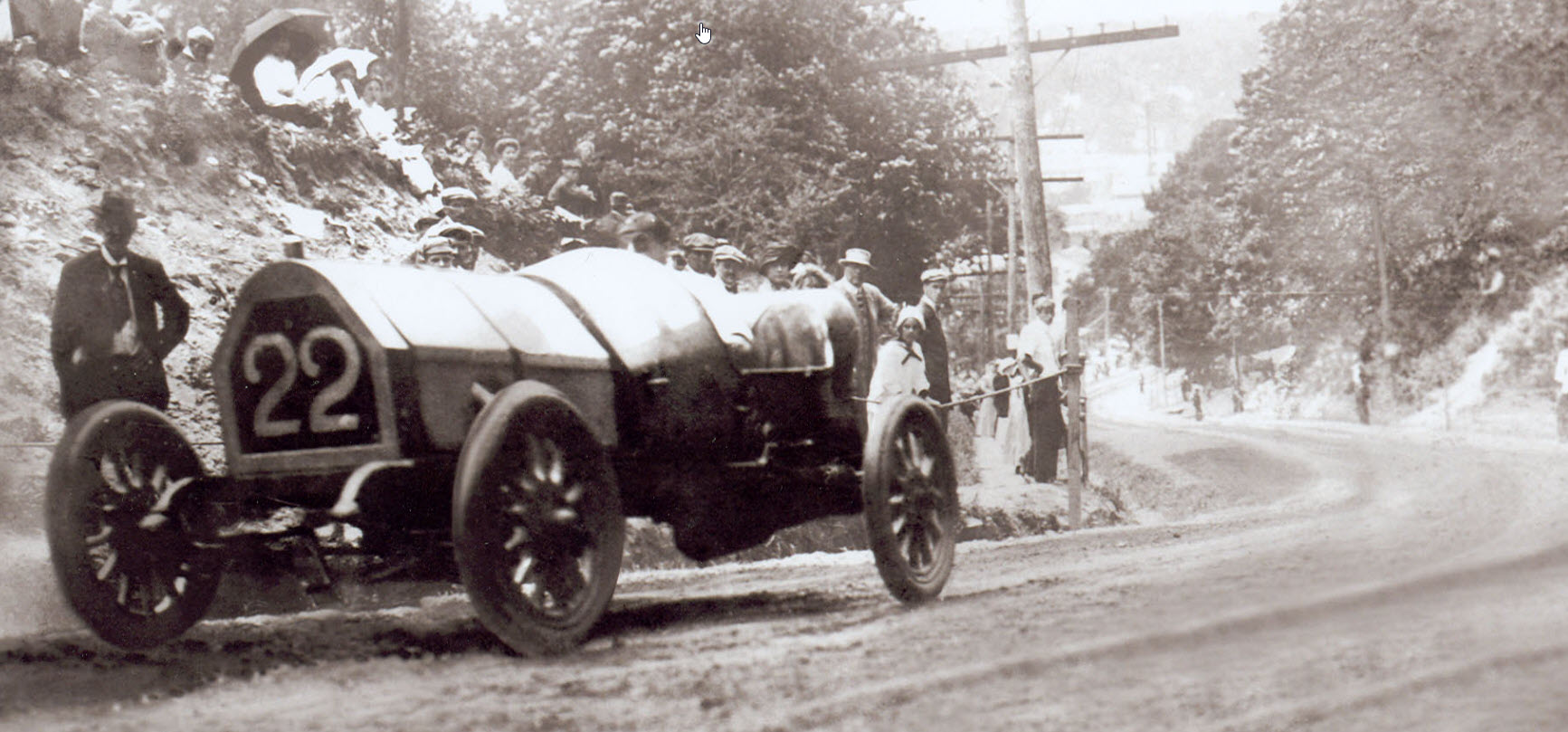
Many Long Islanders are aware of the extensive early racing on the island in the form of the Vanderbilt Cup Races, endurance races and hill climbs in various villages, but few are unaware of the production cars built here.
There was not one, but 3 little-known automobiles built in Port Jefferson, Long Island in the 1910's, with some almost going all the way to the Indy 500.
French engineer, Maurice Richard, had hopes of selling his one-cylinder automobile in the United States. Coming from France, he settled in Port Jefferson in 1909 renting a large factory space near Port Jefferson village in Port Jefferson Station just west of the railroad station.
Seen at the left, his 12hp 'one-lunger' race car, known as the 'Only' was so named due to it having 'only' one cylinder.
While no match for Henry Ford and his car and other multiple-cylinder cars, the crowd favorite 'Only' did manage to hold its own in the 1910 Port Jefferson hill climb coming in 10th in the 'free-for-all' category.

Interior factory photo where the Only was built.
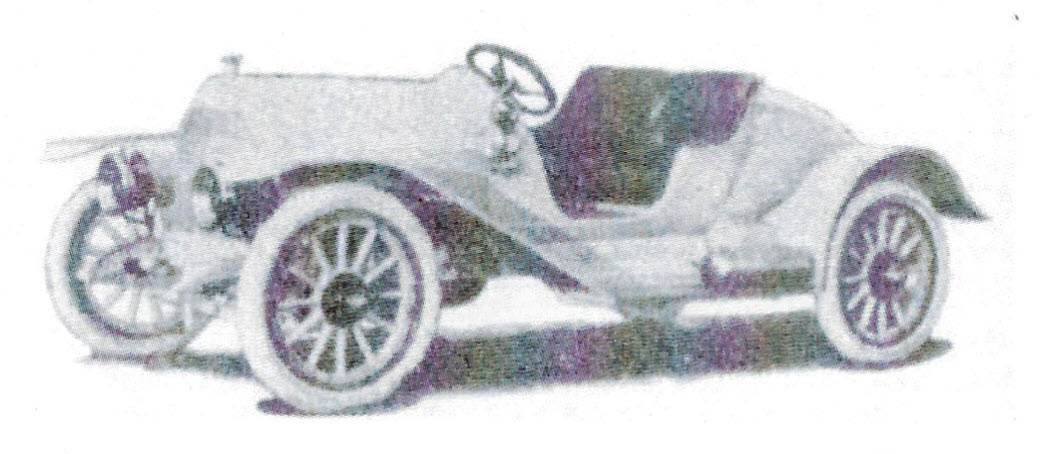
The Only, being described in Motor News as "having no chance against the 4-cylinder cars", motivated Richard to eventually set out to build his own 4-cylider automobile. In 1914, he introduced the gentleman's sporty roadster, The Metropole. Slow sales and little interest forced Richard to abandon Port Jefferson for Cleveland where he did build other cars, but again, with little success.
The factory site was sold off to Finley Robertson Porter in 1915. More on Porter in a bit.

Jumping ahead a little to the 1920's after Finley Porter, the factory became the site of the Port Jefferson Lace Mill seen here in the 50's.

The location today still sees the building located in Port Jefferson Station. Circled in red.
Maxim Tricar
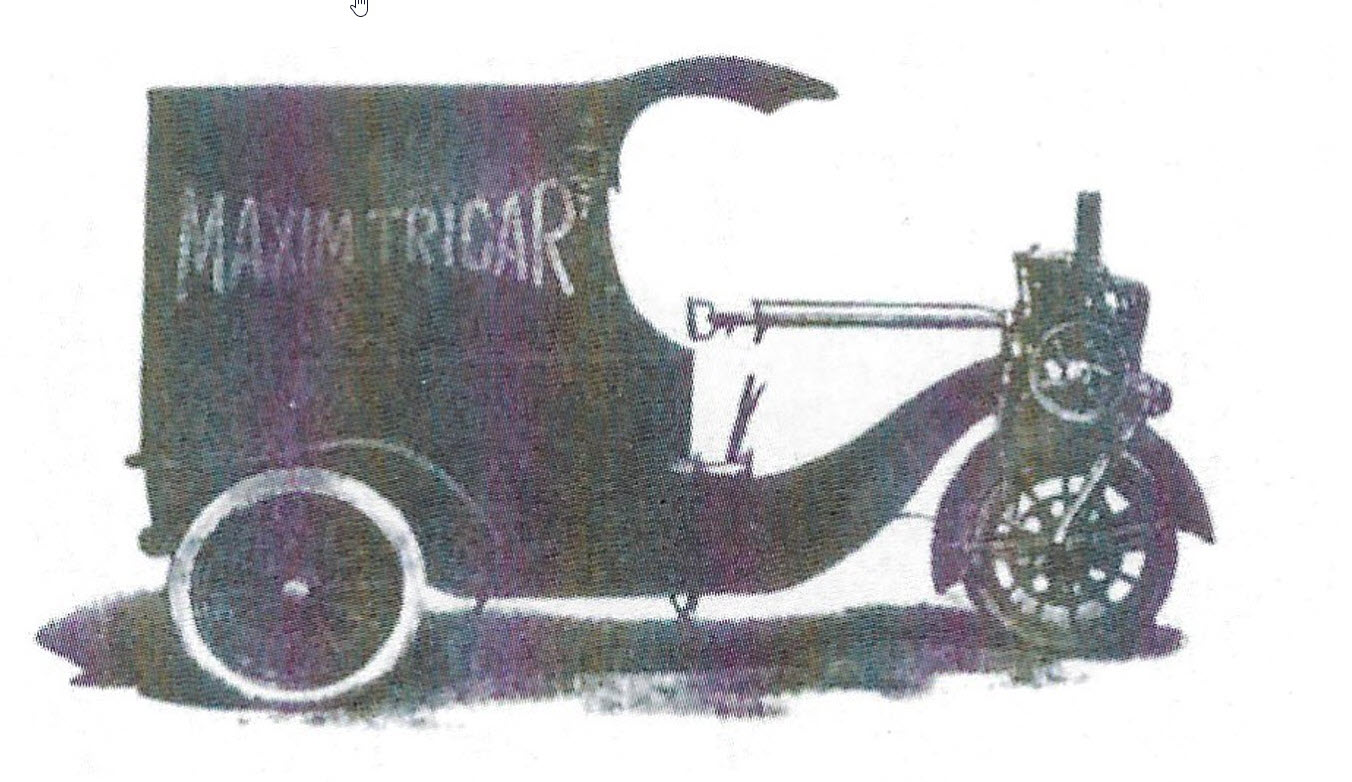
While Richard was building the Only at the front of the factory, the back had Carl Peters quietly building his 3-wheeled delivery van called the Maxim TriCar.
Designed by a likely German relative named George Peters and Frenchman Maxim Karminski in Connecticut, Carl Peters' TriCar had an 8hp, 2-cylinder motor mounted on the front wheel with steering performed by use of a tiller. The delivery van sold for $425 and had minor success. When Maurice Richard sold the factory to Finley Robertson Porter in 1915, Peters and the Maxim left the factory also with some speculating he relocated to Philadelphia.
Finley Robertson Porter and the F.R.P.
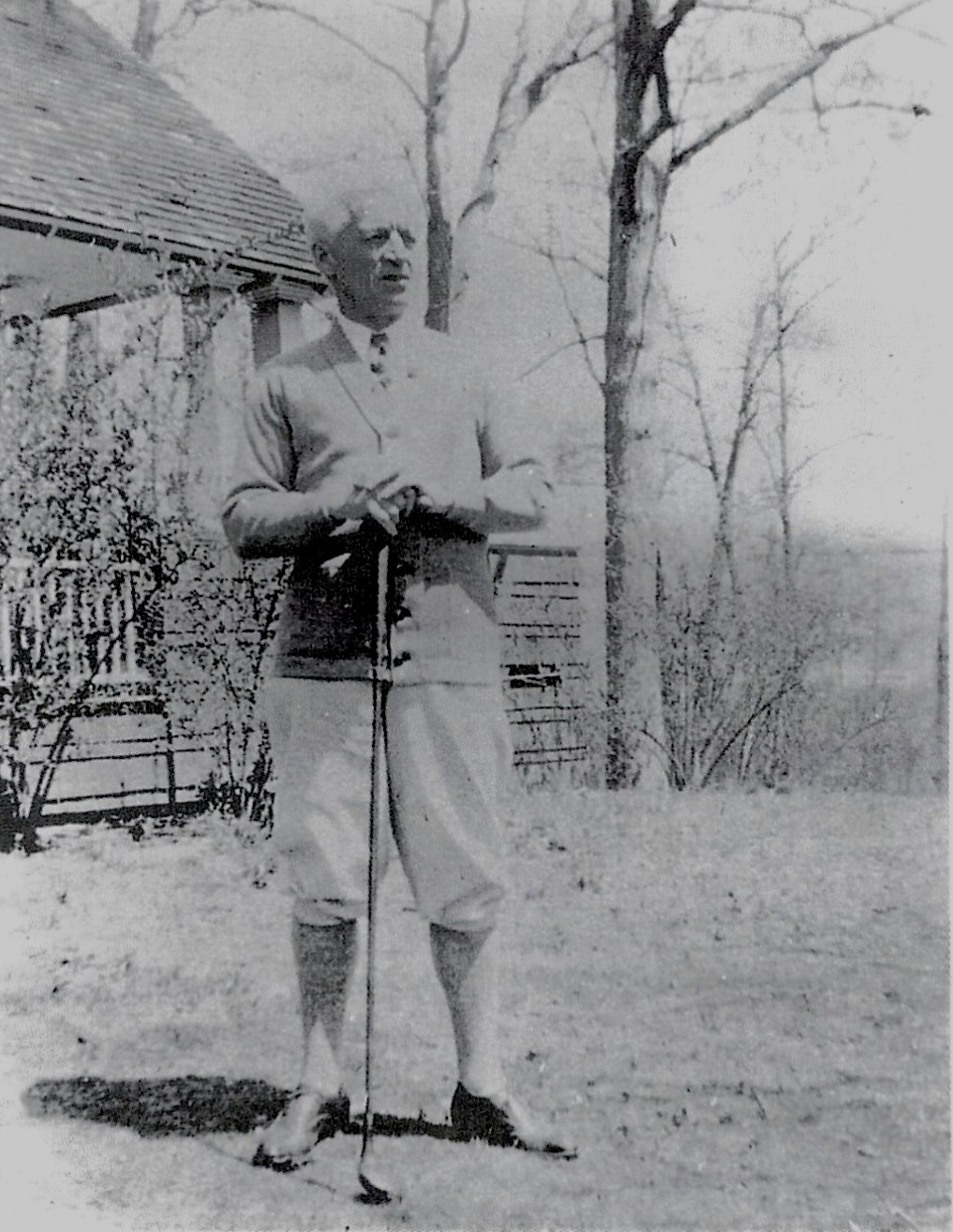
Belle Terre, Port Jefferson resident, Finley Robertson Porter (1871-1964) was an engineer at Mercer and responsible for the 1913 'T' head Raceabout. When a German engineer was hired by Mercer the following year, and Mercer's move to an 'L' head machine, an insulted Porter left Mercer in pursuit of building his own car.
Belle Terre, as some Motor Parkway enthusiasts may be aware of, was a large housing development by Dean Alvord, who was an original member of the Motor Parkway Plan and Scope Committee along with Willie K, Jefferson DeMont Thompson, Ralph Peters, Dave Hennen Morris and A.R. Pardington.
Alvord was also known for his development of Roslyn Estates.
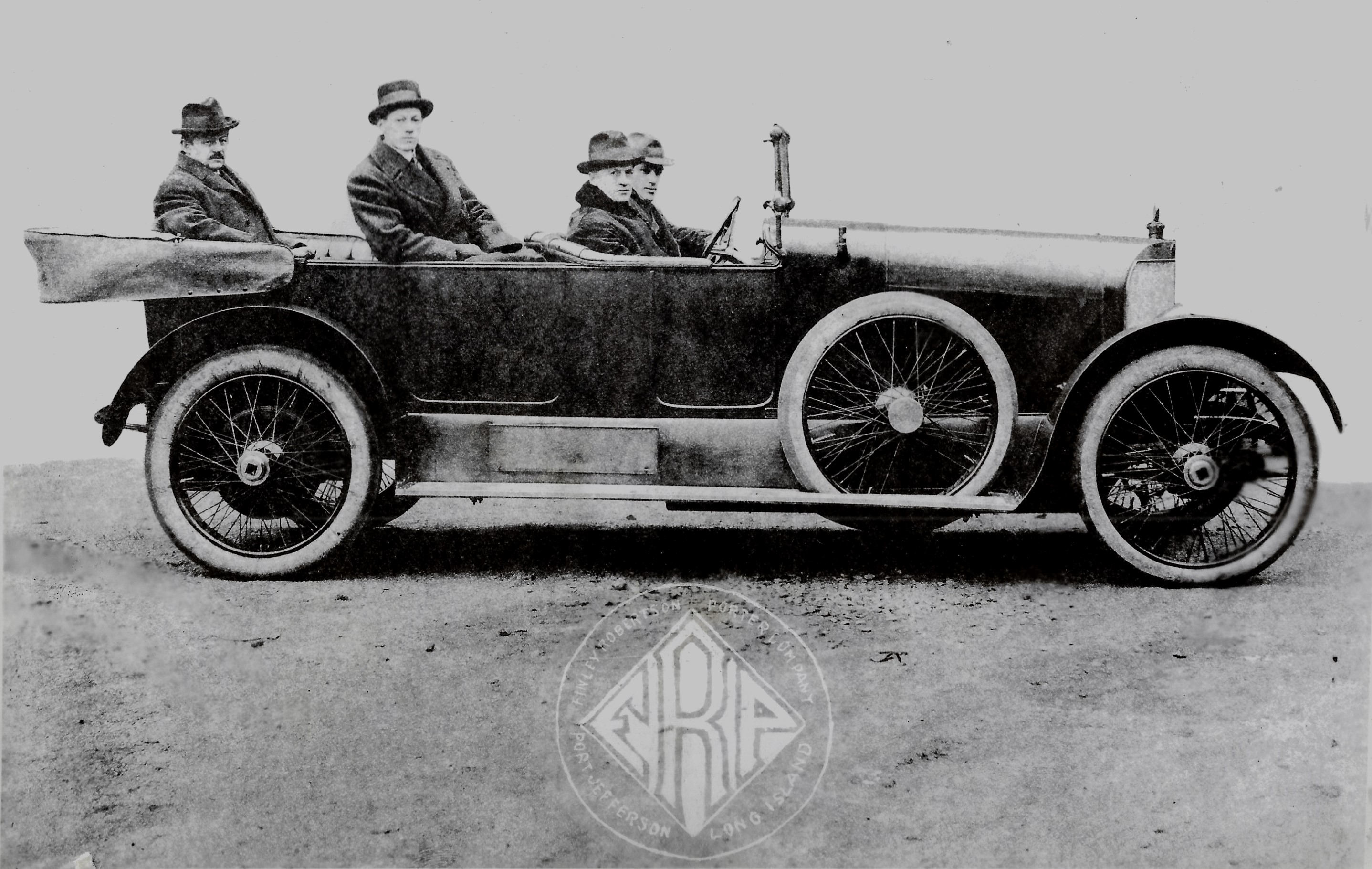
Completely opposite of Henry Ford's philosophy of building automobiles cheaply for the masses, Porter aspired to building the absolute finest car anywhere at the time, price no object.
The British Rolls-Royce and American Pierce-Arrow were thought to be the finest cars built then with the Pierce-Arrow sporting the very high price tag of about $7500. Porter's new F.R.P. cars were priced at $5000 for the chassis alone, with various coachwork bodies costing an additional $3000-5000. Indeed, he did build the finest car around with innovations like the first production car with 4 valves per cylinder and an overhead camshaft, but with a price higher than a Rolls or Pierce-Arrow, sales during the more financially depressed times dictated slow sales for the F.R.P.
This F.R.P. has the 7-passenger touring body with Finley Porter at the wheel.

An extremely rare, mint condition F.R.P. sales brochure found in the Walt McCarthy archives.
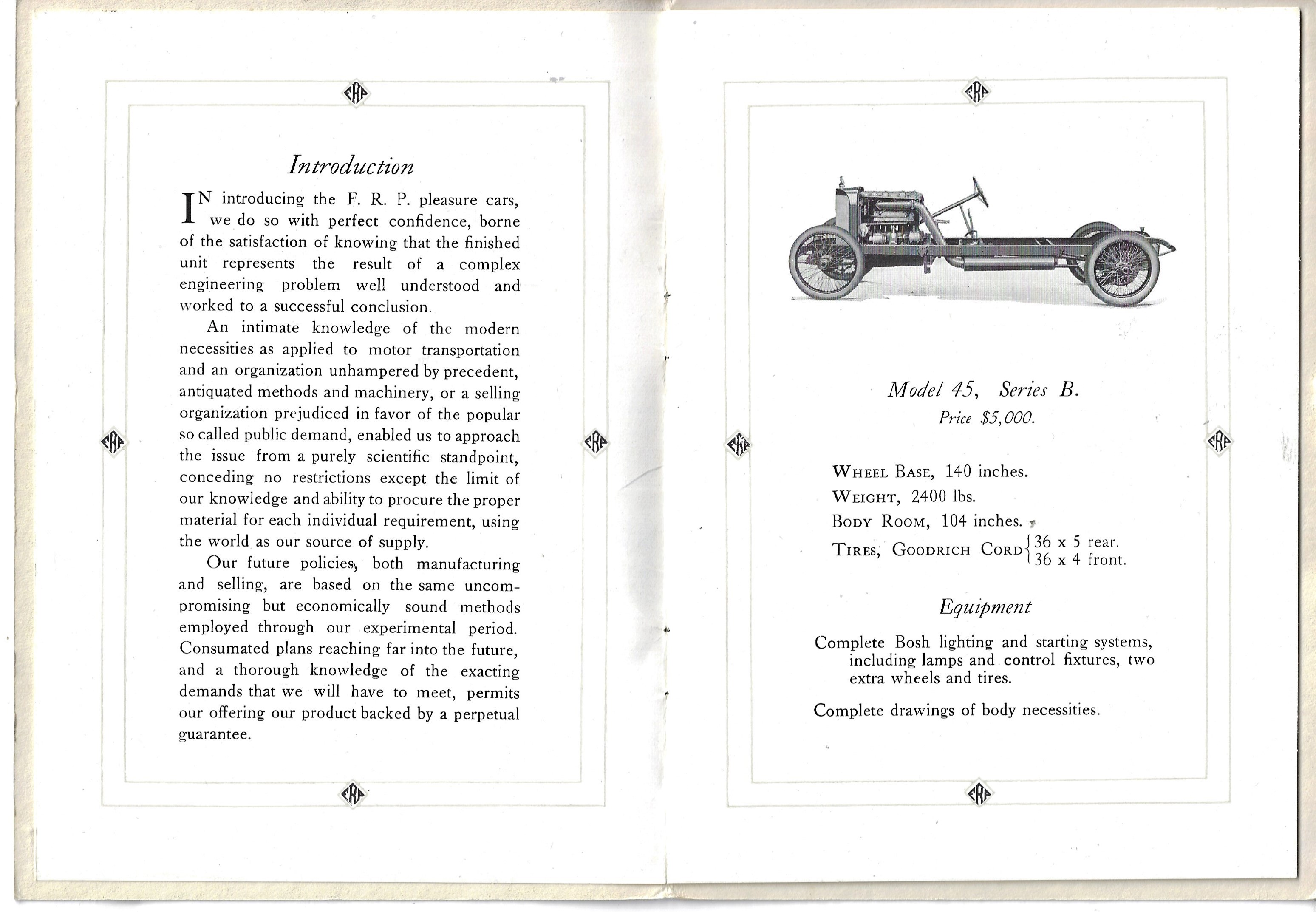
The Model 45 Series B chassis was the largest of the 3 with a wheelbase of 140 inches, the Series C at 130 inches, and the Series A with 110 inches. All chassis $5000.
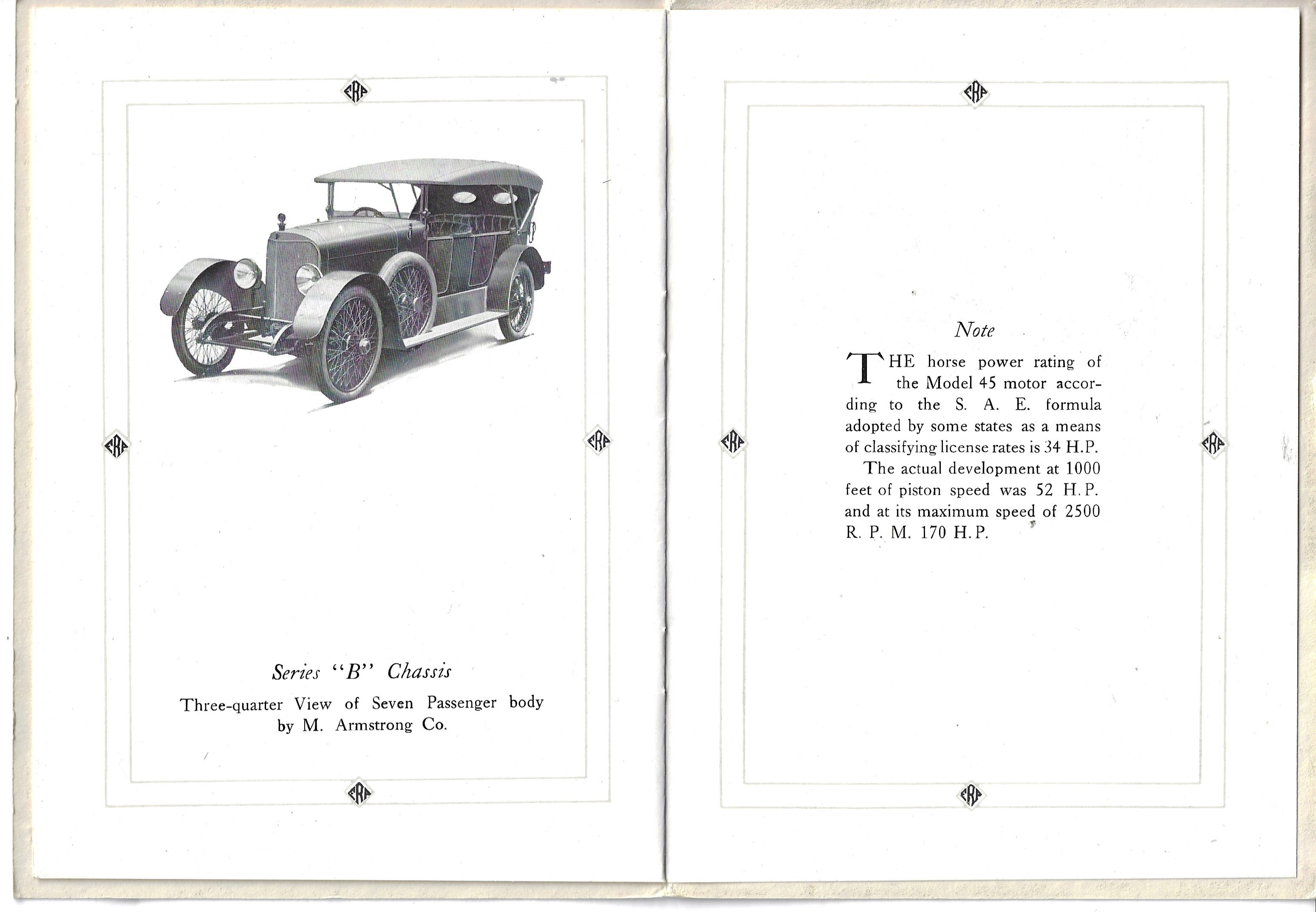
M. Armstorng produced the 7-passenger touring body for the Series B and was F.R.P.'s largest offering coming in at almost $10,000 (about a quarter million today)
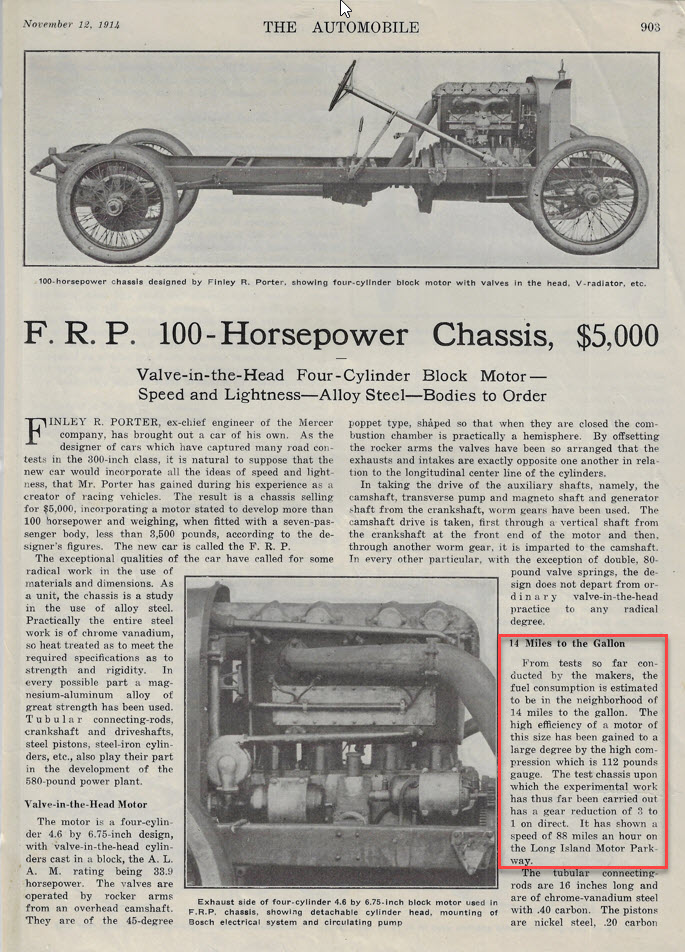
November 12th, 1914 in 'The Automobile', the F.R.P. was praised for its innovation and quality.
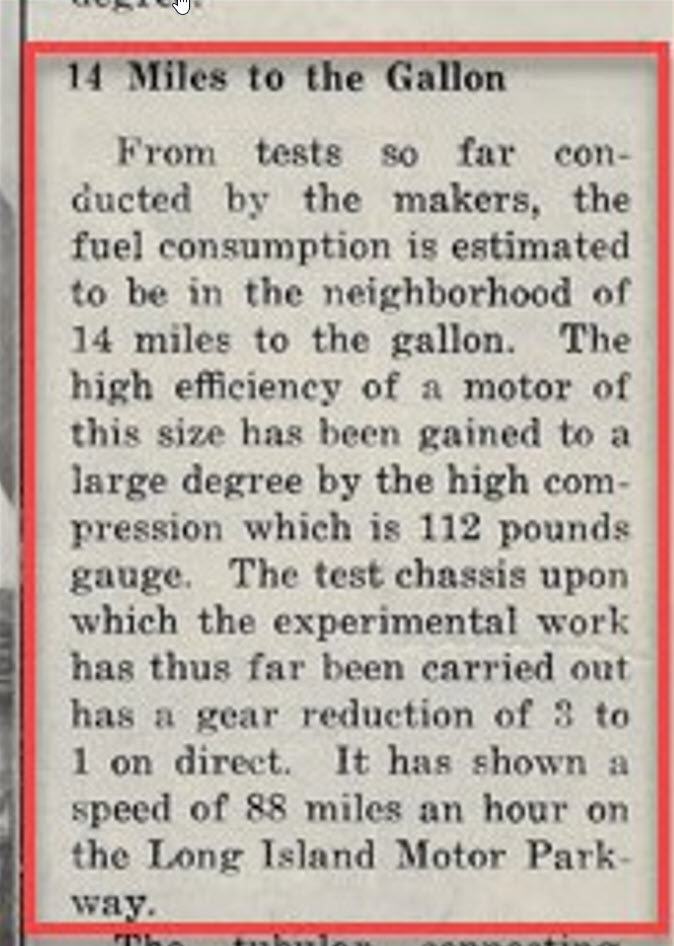
Being produced in Port Jefferson in 1914, the logical 'test track' was the Long Island Motor Parkway. With the blistering, Doc Brown Delorean speed of 88 mph, the F.R.P. was as fast as it was beautiful.
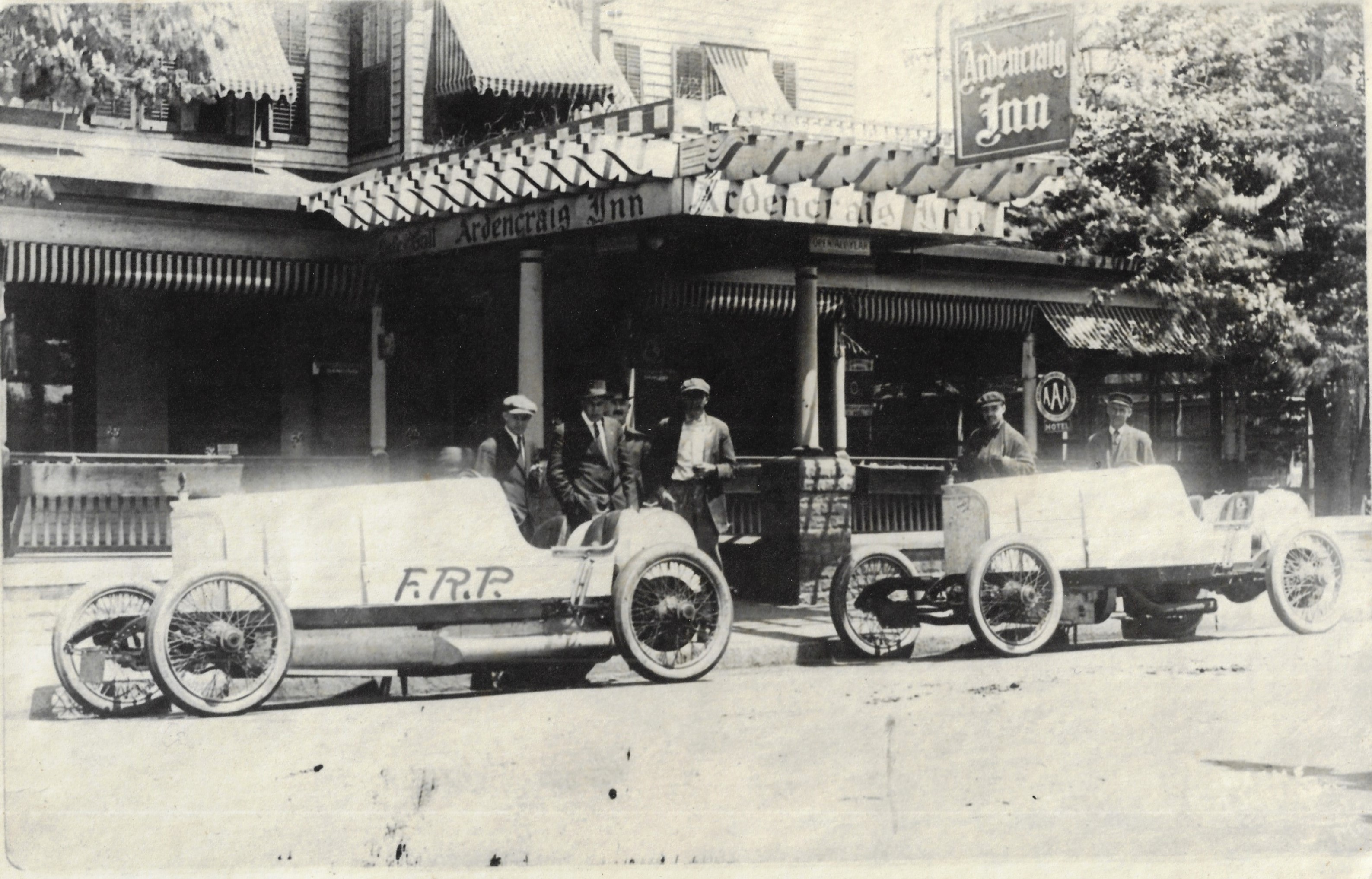
As uncovered in last weekend's mystery photo, Finley Porter prepared 3 racers to compete in the 1915 Indy 500. Built with Willys-Knight engines, these F.R.P. Porter-Knight racers ended up not competing due to engine problems before the race. It was these engine failures that caused Porter to build his own engines onward.
Two are seen here in front of the Ardencraig Inn on Main St. Port Jefferson. The Ardencraig catered to motorists at the time, and many used the Ardencraig as rest stop on the way to the ferry or other destinations.

With only about 12-35 F.R.P. cars built from 1916-17, depending on various sources, the U.S. Government took over the F.R.P. factory for the war effort. After the war, the American & British Manufacturing Co. bought up the F.R.P. company from Porter, rebadged the unchanged F.R.P. as the 'Porter Automobile' and moved the entire production across the Sound to Bridgeport Connecticut very close to the Locomobile facility.
Finley Robertson Porter moved on to aviation at Curtiss Engineering in Garden City Long Island in the 1920's.
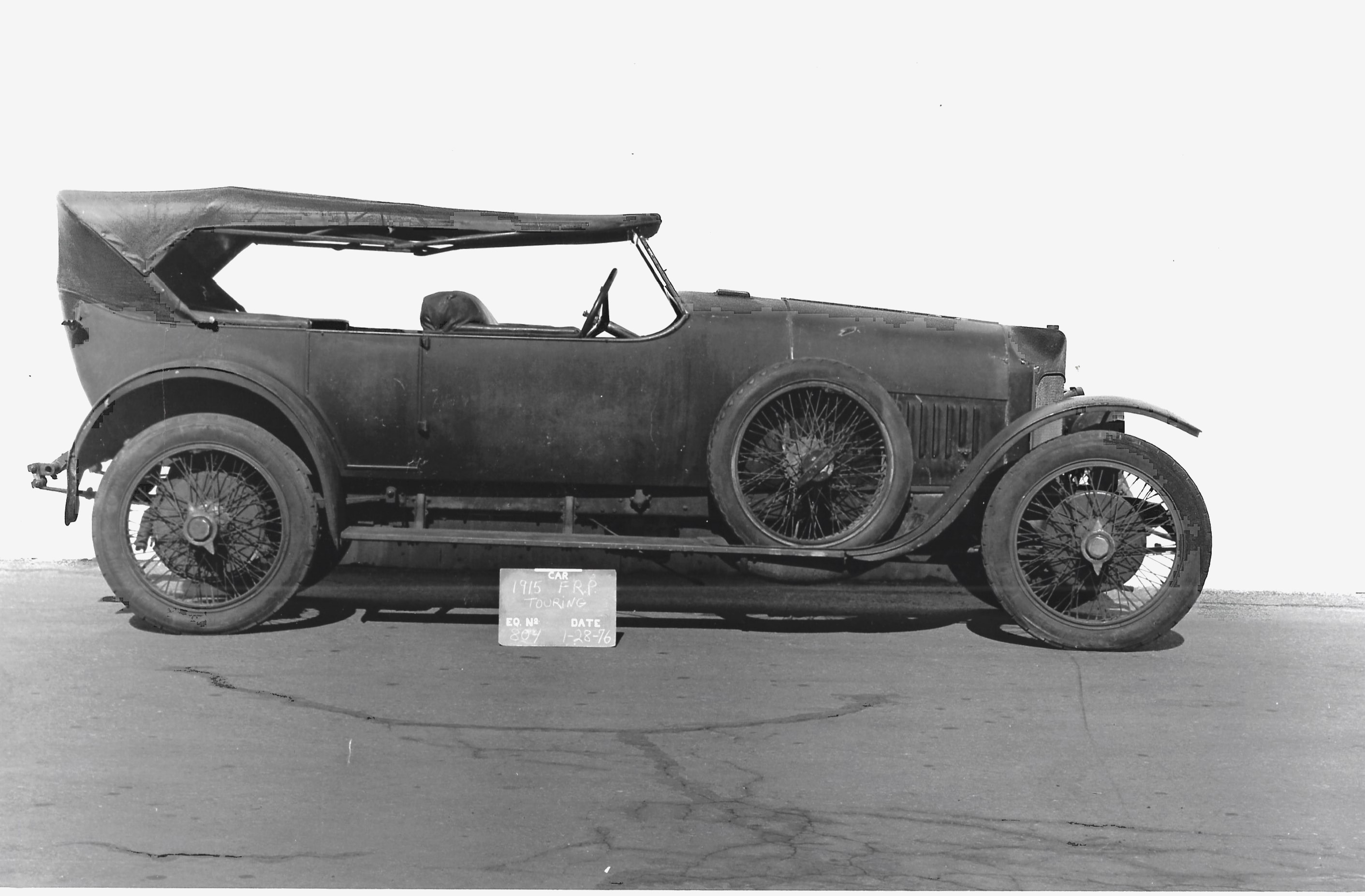
Of the 35 or so cars produced, only one F.R.P. is known to have survived, although there is possibly a 2-seater raceabout model in existence.
Famous automobile collector Bill Harrah's most desirable car he wanted for his collection was an F.R.P.. There are some conflicting accounts from Porter's relatives and the 'Harrah's Automobile Collection' book, but in 1976 he finally found the last one unrestored.
These photos from the Harrah documentation just after acquisition.

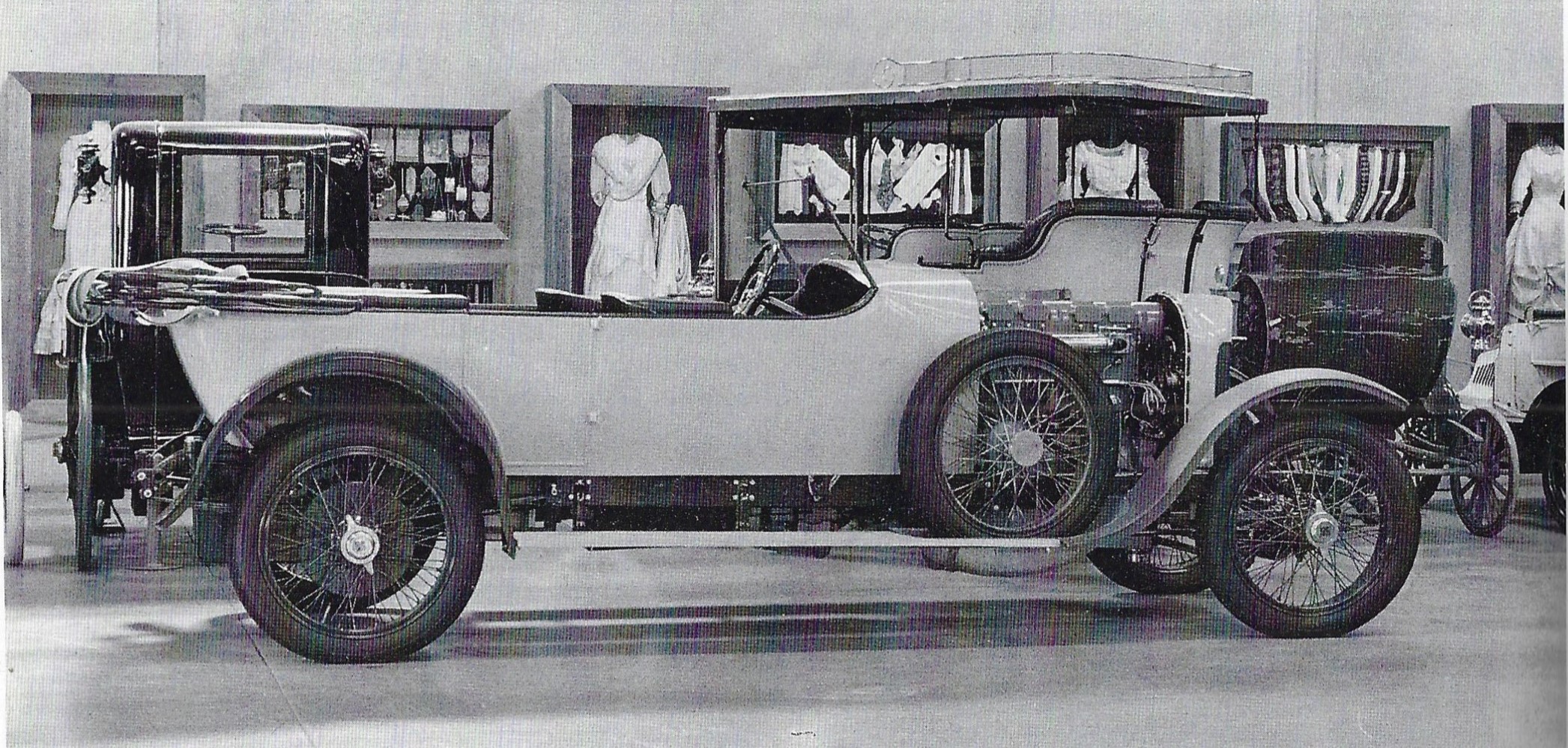
After the 1977 restoration in the shop at Harrah's.
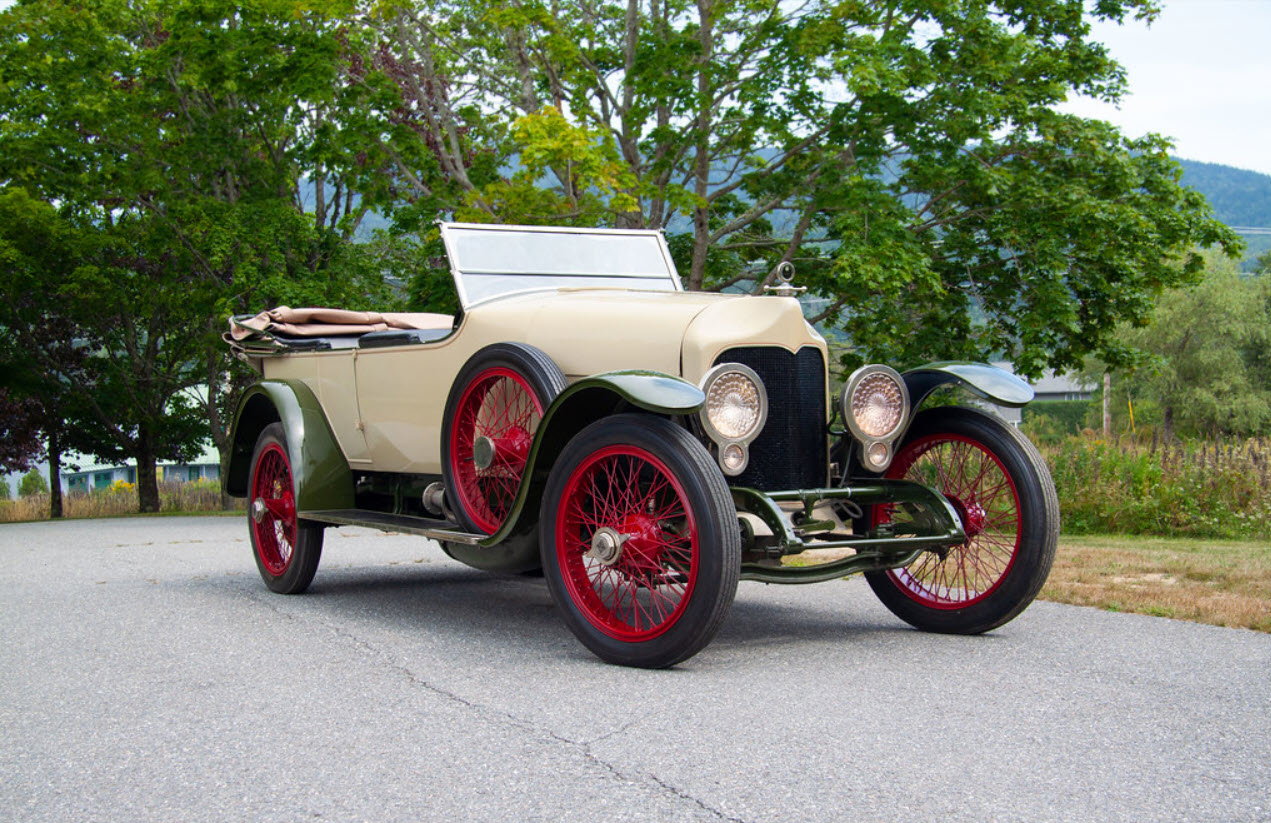
When Harrah died and much of the collection auctioned off, the sole remaining F.R.P. was sold to a man in California for $350,000, then it was sold to a man in New York who in turn donated the car to a Florida museum with the provision it never be sold. When the Florida museum failed, it was donated to the Seal Cove museum in Maine with the same provision.
The F.R.P. is currently in the Seal Cove museum.

Finley Robertson Porter died at his Southampton home on Feb. 9th, 1964 after his long career in automobiles and aviation.
The F.R.P. can be seen at the 4:07 mark.

Comments
So little is known about the dozens of vehicle manufacturers once located on Long Island. Also, very few examples survive. Other than the Fulton Truck at the Cradle of Aviation Museum (donated by Al Velocci), I don’t know of any still preserved on L.I. Thanks for compiling this info. - just glad that Walter McCarthy had saved the brochure and other documents!
Wonderful article Howard.
I “only” knew of the FRP and Only but this article goes further. Great history.
Thank you—
Gerry
Thank you for posting this excellent history. In my capacity as Director Emeritus of the Seal Cove Auto Museum and admitting that the F.R.P. is my favorite car in the Museum’s collection, let me add some more background.
In October 1975, the F.R.P. was sold to Tom Dawson, Purchasing Agent for Bill Harrah. The car is featured in “Harrah’s Automobile Collection, One man’s tribute to the great automobiles of the World” by Dean Batchelor. The book states: “The car at the top of Harrah’s want-list… was the F.R.P.” The book describes Dawson’s acquisition of the F.R.P. for Harrah in detail. Later, an issue called “Harrahscope,” ran a full-page feature about the car… “Harrah’s Finds’ Most Wanted’ Auto; Elusive F.R.P. Touring.”
The F.R.P. is also featured in Automobile Quarterly, Volume 31, No. 4, Summer 1993.
With the demise of Bill Harrah and the sale of many of his cars, the F.R.P. went to Mr. Charles Mallory of Connecticut, who later donated it to the Collier Automotive Museum. When the Collier Museum closed, the F.R.P. was donated to the Seal Cove Auto Museum in October 1994.
A 2-seater raceabout replica was later assembled from leftover parts; Seal Cove’s F.R.P. is the sole survivor.
The Seal Cove Auto Museum opens for the season on May 1st. https://www.sealcoveautomuseum.org/
I missed this one so late to the party. I tried to track down a FRP “bitsa” a few years ago and some info and the Porter- Knights at Indy and Maywood. It was for the Auto Racing on Long Island Photo show a few years ago at the Port Jefferson Village Center. I believe I also used them on the Port Jefferson Hillclimb Facebook site ( shameless promotion)
Click here to Download this file
the Porter-Knight info
Click here to Download this file
Eastbound on the LIRR and local North Shore roadways, before you reached the new FRP factory, there would shortly be more competition on the Port Jeff RR line. By May 1911, at Head of the River, Smithtown by the LIRR trestle across from where the Bull is today, the township’s first auto dealership was in business, selling the Hudson 33 after A.R. Pardington moved his family to a home (demolished) almost across from it in 1909-1910. He was followed by his colleague Fred Wagner who also bought land at Head of the River near the tracks at that time, before building (1912) his own home (National Register) in Smithtown on Auto Avenue (now Edgewater Ave). The old Hudson dealership has been purchased by the Town Board, which plans to demolish it. For the Hudson 33 see https://www.facebook.com/TheJBSCollection/videos/888040819054816 For my article in the Smithtown News, linking the building to Pardington and Wagner, see https://www.facebook.com/photo?fbid=700009381503955&set=pcb.700011258170434 For Fred’s home, see the Vanderbilt Cup Races at https://www.vanderbiltcupraces.com/blog/article/the_residence_of_the_starter_of_five_vanderbilt_cup_races_rediscovered_in_s
Greg - I have known about this F.R.P. auto from an earlier time and that it was built in Port Jefferson, but where in Port Jeff.?? I now know where! When I have the time, (next Hillclimb?) I’ll will check it out. Thanks!